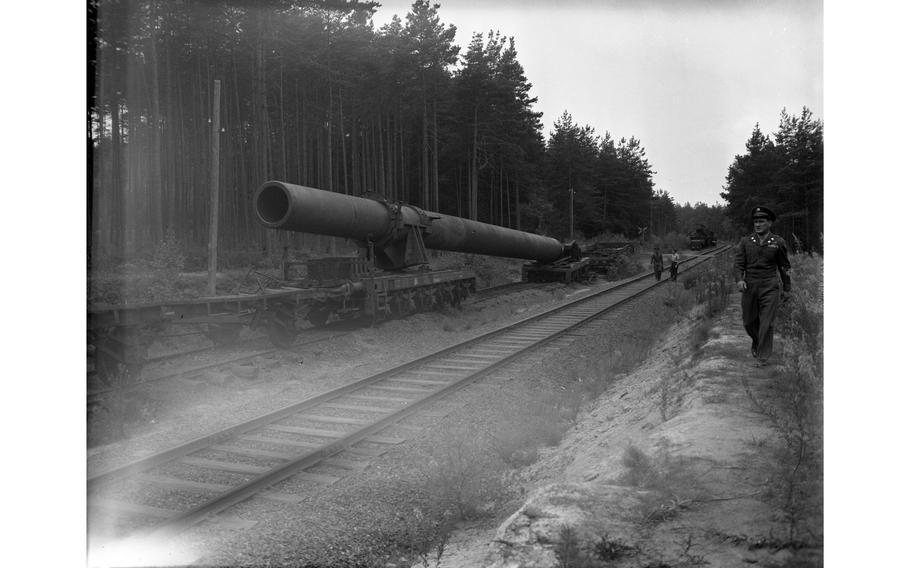
The 90-foot long tube of the German railway gun is waiting to be turned into scrap metal. The massive Nazi Germany-produced railway gun was being disassembled in the woods near Grafenwöhr. Although nicknamed “Big Bertha” by the American forces, the gun — one of the two 800mm K(E) railway guns developed and produced by the German steel and armament producer Krupp in the early 1940s — was either called “Gustav” or “Dora” by the Germans. (Alfred Morrissey/Stars and Stripes)
This article first appeared in the Stars and Stripes Europe edition, July 22, 1949. It is republished unedited in its original form.
HEIDELBERG, July 21 (Special) — A 140-ton German siege gun, with tubes 90 feet long, is being "demilitarized" near Grafenwöhr by workers who are slicing up the giant weapon with cutting torches.
The "Big Bertha" of World War II is expected to yield 6,000,000 pounds of scrap steel, according to estimates of the engineer and logistics divisions, EUCOM.
Each of the barrels of the gun has a three-foot bore — large enough for a man to crawl inside. The wall of each tube is six inches thick.
The complete gun made up a 23-car train, and required a company of 200 soldiers to service and operate it. Even under favorable conditions it took 48 hours to get the gun into position for firing from two parallel tracks.
The Germans are known to have had four of these long-range weapons. One was captured by the British and two by the Russians. The fourth, at Grafenwöhr, was used in the siege of Sevastopol.
Each of the shells used in the gun weighed more than four tons, was 16 feet long, and contained 3,000 pounds of powder. The gun had a range of about 30 miles.
Looking for Stars and Stripes’ historic coverage? Subscribe to Stars and Stripes’ historic newspaper archive! We have digitized our 1948-1999 European and Pacific editions, as well as several of our WWII editions and made them available online through https://starsandstripes.newspaperarchive.com/